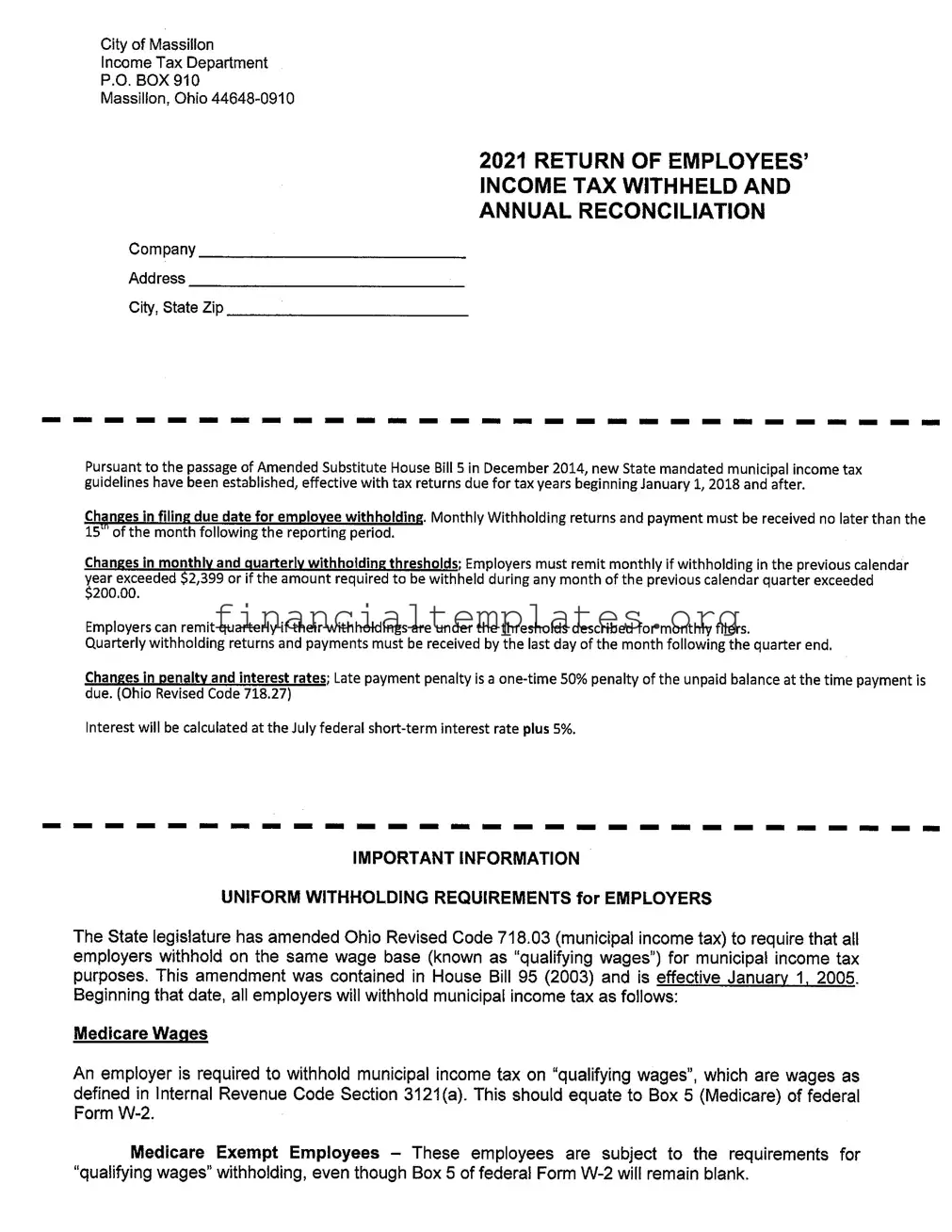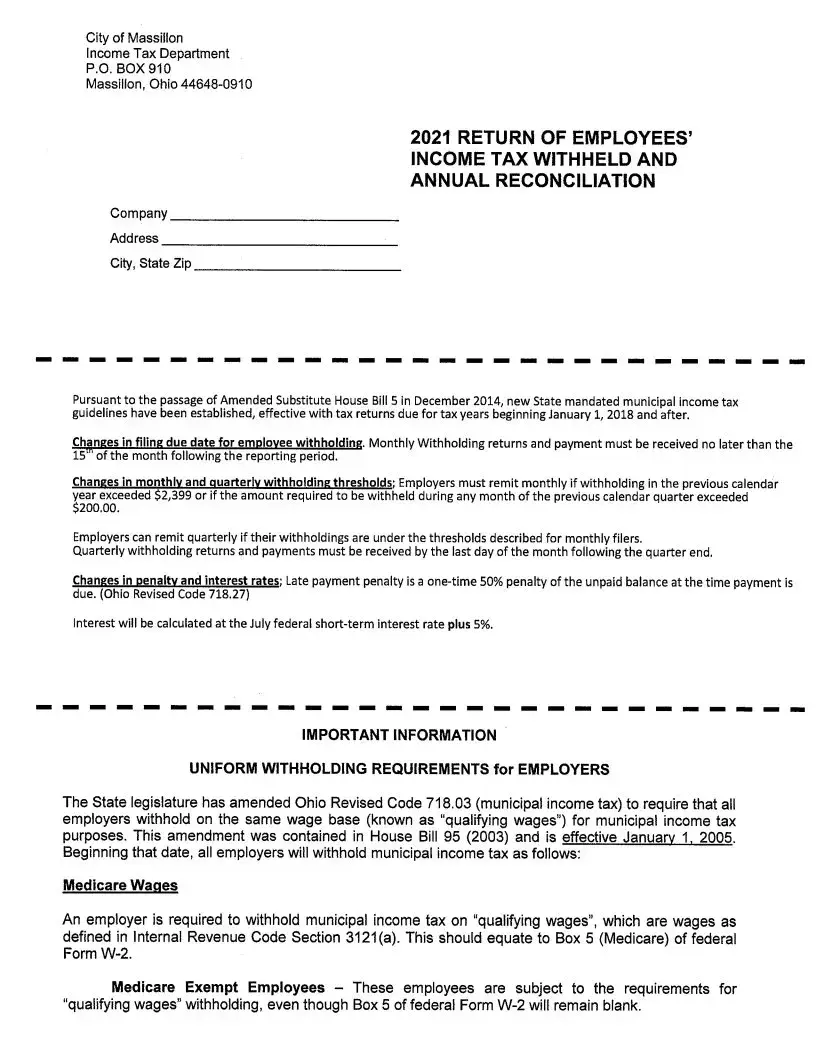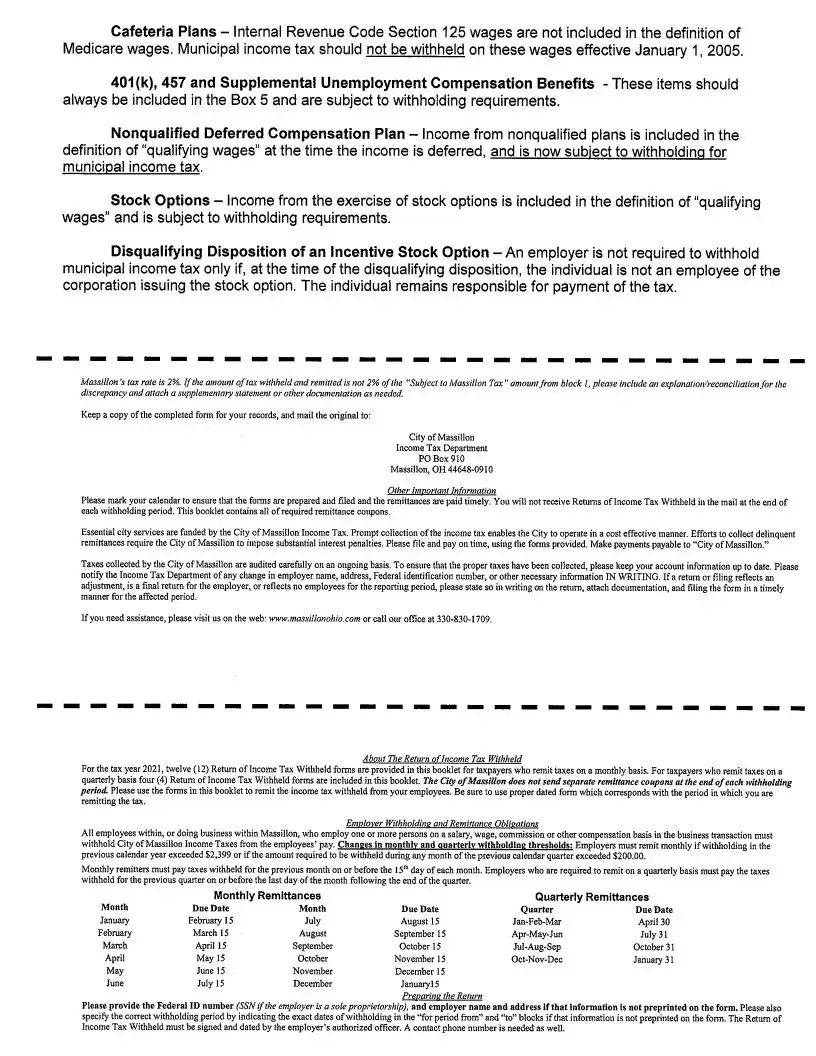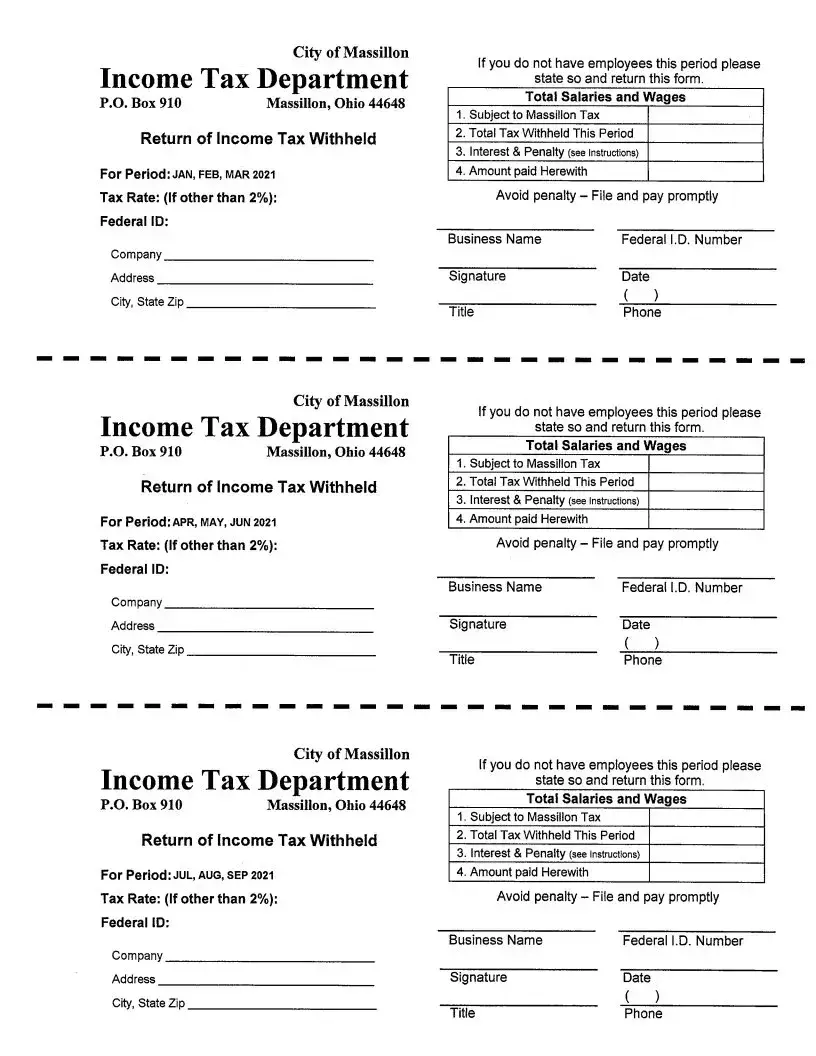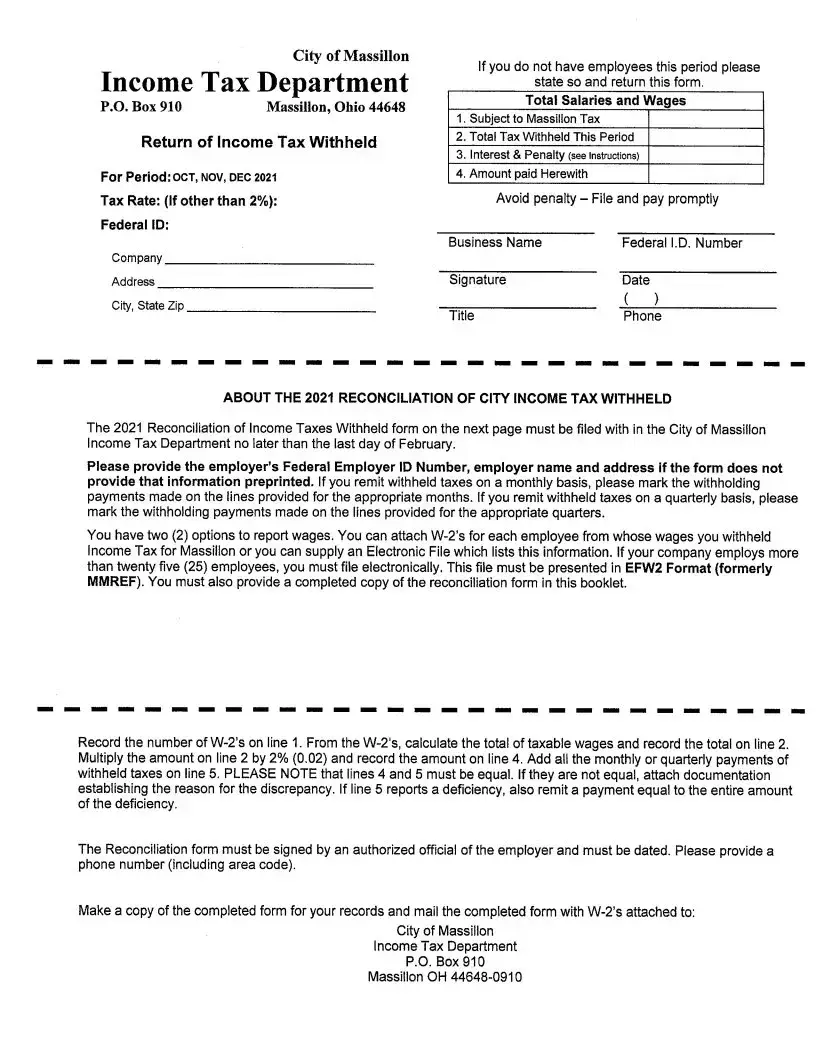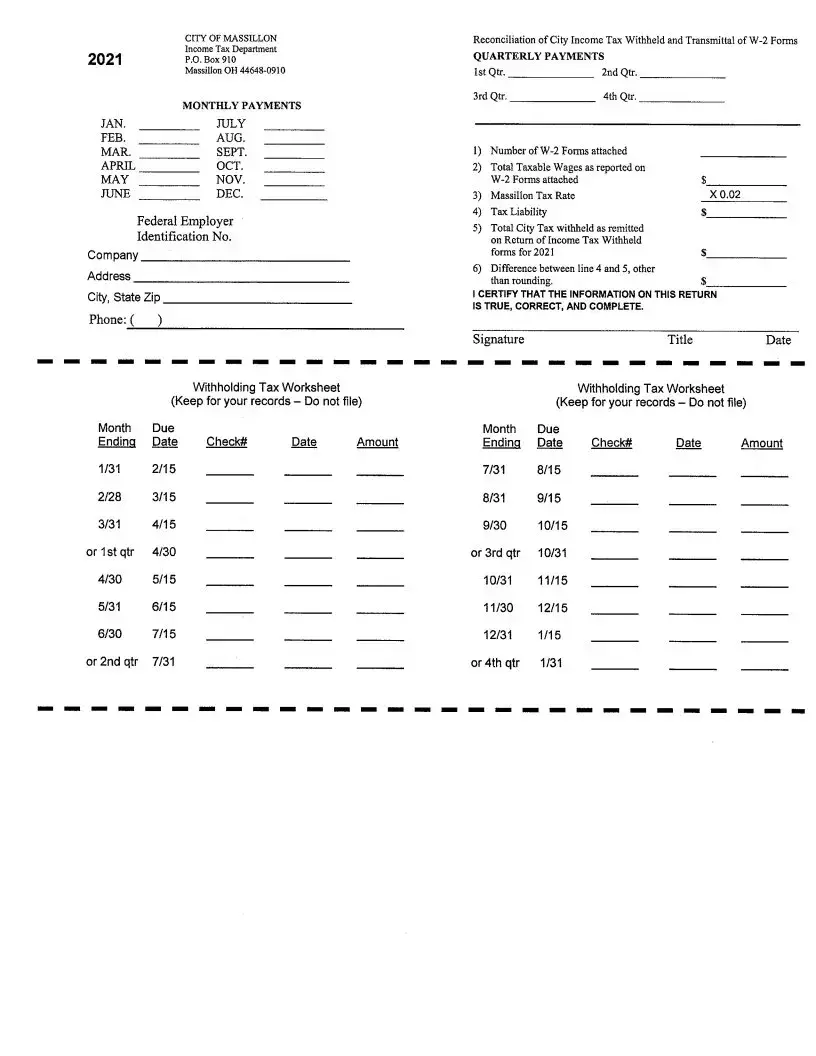The City of Massillon Income Tax form shares similarities with the IRS Form 941, "Employer's Quarterly Federal Tax Return." Both forms are crucial for reporting wages paid, taxes withheld from employees, and the employer's portion of social security or Medicare tax. They serve as a reconciliation between what an employer has withheld from employees' paychecks and what is actually owed to the government. The specifics, such as the tax rates and thresholds, may differ, but the core function of reconciling wages and withheld taxes links these two forms closely together.
Forms similar to the City of Massillon Income Tax form also include the IRS Form W-2, "Wage and Tax Statement." This form is given to employees annually and details the amount of taxes withheld from their paychecks throughout the year. Although the W-2 is more of a summary form for the employee's benefit and the Massillon form is for municipal tax collection purposes, both deal with the recording and reporting of withheld income taxes, making them fundamentally connected in their objective to ensure accurate taxation.
Another analogous document is the IRS Form W-3, "Transmittal of Wage and Tax Statements." This form accompanies the W-2 forms when employers send them to the Social Security Administration. Like the City of Massillon Income Tax form, the W-3 plays a key role in compiling and summarizing tax withholding information on a larger scale, ensuring that the reported amounts are transmitted accurately and in totality for tax purposes.
The IRS Form 940, "Employer's Annual Federal Unemployment (FUTA) Tax Return," although focused on unemployment tax, bears resemblance in its purpose of reconciling taxes owed by the employer over the course of the year. Both the Form 940 and the City of Massillon form require employers to calculate the total tax due, report any deposits made during the year, and pay any balance owed, highlighting their shared goal of annual tax settlement.
State Unemployment Tax Act (SUTA) forms, which vary by state, also share commonalities with the City of Massillon's Income Tax form. SUTA forms are used by employers to report wages paid and unemployment taxes withheld at the state level. The principle of employers reporting on the monies withheld from their employees and paying those funds to the relevant tax authority closely aligns the objectives of both SUTA forms and the Massillon form.
The IRS Form 1099-MISC, "Miscellaneous Income," and the newly instituted Form 1099-NEC, "Nonemployee Compensation," for reporting payments to non-employees, share a conceptual connection with the City of Massillon Income Tax form in their underlying principle of tax reporting and withholding. While the 1099 forms primarily deal with contractor and miscellaneous payments outside of traditional wages, they, like the Massillon form, are essential in the accurate reporting and taxation process.
Ohio Form IT 3, "Transmittal of Wage and Tax Statements," is directly related in its function of reporting employees' income and taxes withheld at the state level. Both Ohio's IT 3 and Massillon's tax form are integral to ensuring that the appropriate tax amounts are withheld from employees' pay and then reported and paid to the tax authorities, reinforcing the necessity of accuracy in tax documentation and compliance.
The IRS Form 944, "Employer's Annual Federal Tax Return," is designed for smaller employers to report their tax liabilities annually rather than quarterly. This form and the City of Massillon Income Tax form are similar in that they both aim to reconcile the total taxes withheld from employees throughout the year with the total taxes due, albeit on different scales and for different tax authorities.
The Ohio Employer's Quarterly Municipal Tax Withholding Statement is another document sharing characteristics with the City of Massillon Income Tax form. Both are geared towards the periodic reporting of income taxes withheld on behalf of employees, ensuring that local municipalities receive timely and accurate tax payments to support municipal services and infrastructure.
Finally, the IRS Form 1120, "U.S. Corporation Income Tax Return," while primarily for corporate income tax, involves principles of income reporting and tax calculation that resemble the processes found in the City of Massillon Income Tax form. Both forms require the detailed reporting of income and taxes, highlighting the pervasive nature of governmental requirements for transparency and accuracy in tax-related matters across different levels of tax collection and reporting.
